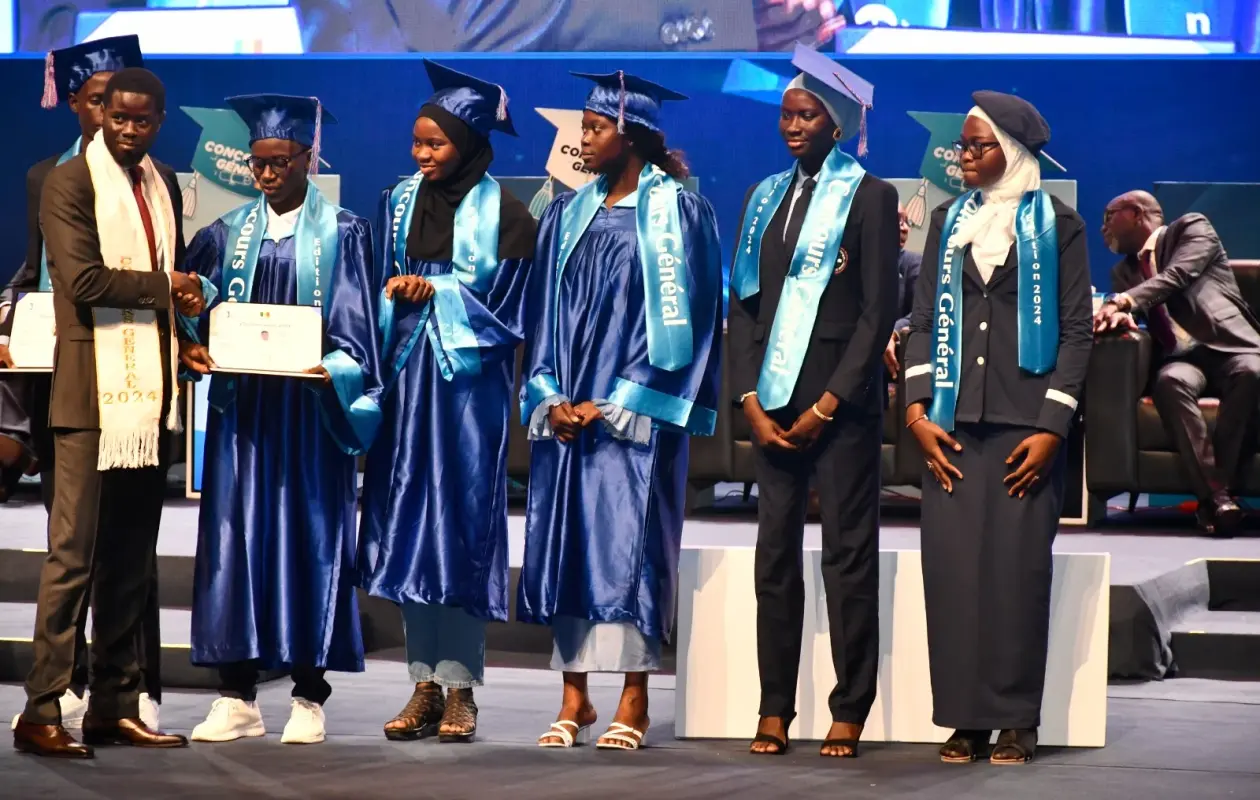
Bac 2025 : les filles dominent, mais butent sur les mentions
With the majority of applicants and successful candidates, girls confirm their central place in the Senegalese education system. But their lesser access to distinctions, valued courses, and their vulnerability outside of school highlight persistent inequalities. A paradox that the Minister of Higher Education wants to break. Speaking to the press this Wednesday at his ministry in Diamniadio, Abdourahmane Diouf highlighted the gender aspect of this 2025 Baccalaureate exam. "We must provide girls with the means to achieve their ambitions. This requires targeted policies, mentoring programs, enhanced supervision, and more diversified guidance," insisted Minister Abdourahmane Diouf.
In raw figures, the success of girls in the 2025 baccalaureate is impressive. They represent nearly 60% of those admitted, dominate in numbers in all age groups, and are making their mark in scientific and technical fields. A seemingly reassuring, even triumphant, picture. However, a closer look at the results reveals a more subtle, but persistent, imbalance. While girls are now the most numerous to cross the finish line, they still struggle to reach the top ranks of the podium, receive distinctions of excellence, the most highly valued series, or the most sustained trajectories.
Indeed, of the 162,527 candidates taking the exam, girls are the vast majority, particularly in the general baccalaureate (95,223 compared to 63,920 boys) and the younger age groups. This dynamic reflects a marked feminization of secondary education, driven by years of efforts in terms of schooling.
But this overrepresentation has not yet translated into equal performance. "In the general baccalaureate, boys have a higher success rate (49.69%) than girls (45.45%). In several academies such as Louga, Ziguinchor, and Sédhiou, the gap reaches up to 10 points," the minister said. He continued: "We have crossed the threshold of girls' presence. We still need to guarantee their full success. Schools must not reproduce inequalities; they must correct them."
Mentions of Excellence: A Persistent Glass Ceiling
The observation is even clearer when we look at the distinctions awarded. While girls are slightly in the majority among candidates with distinction (4,309 versus 3,772), they are significantly outstripped for the "Very Good" distinction: only 63 girls achieve it, compared to 76 boys. The trend is also true for the "Good" distinction, even if the gap is narrower. On the other hand, girls dominate for the "Fairly Good" distinction, a sign of regular success... but not of easier access to excellence.
A positive signal, however, notes the minister: "Girls are more successful than boys in technical and scientific fields. In the Science and Technology field, they achieve a 61.35% success rate, compared to 59.87% for boys. Better still, in the technical baccalaureate, they exceed 70% success rate, a figure significantly higher than their male counterparts."
These performances contradict the stereotypes about the supposed underperformance of women in science. They show that girls can excel in these fields, provided they have access to them.
Where the gaps become glaring is among individual candidates, that is, those who take the exam outside of a traditional school setting. For unsupervised girls, the success rate drops to 16.25%, compared to 20.30% for boys. Even with private supervision, the gap remains: 30.39% versus 40.08%.
A geography of gender inequalities
The gaps between girls and boys also vary by academy. In Dakar, performance is similar (59.77% for girls, 61.39% for boys). But in rural or peripheral areas, the gaps widen to the detriment of girls. In Louga, 49.42% of girls pass compared to 57.71% of boys. In Ziguinchor, the same phenomenon is repeated: 36.85% success rate for girls, 40.62% for boys. "These gaps reveal a double vulnerability of rural girls, both as girls and as students from areas with limited access to educational resources."
Commentaires (2)
Participer à la Discussion
Règles de la communauté :
💡 Astuce : Utilisez des emojis depuis votre téléphone ou le module emoji ci-dessous. Cliquez sur GIF pour ajouter un GIF animé. Collez un lien X/Twitter ou TikTok pour l'afficher automatiquement.